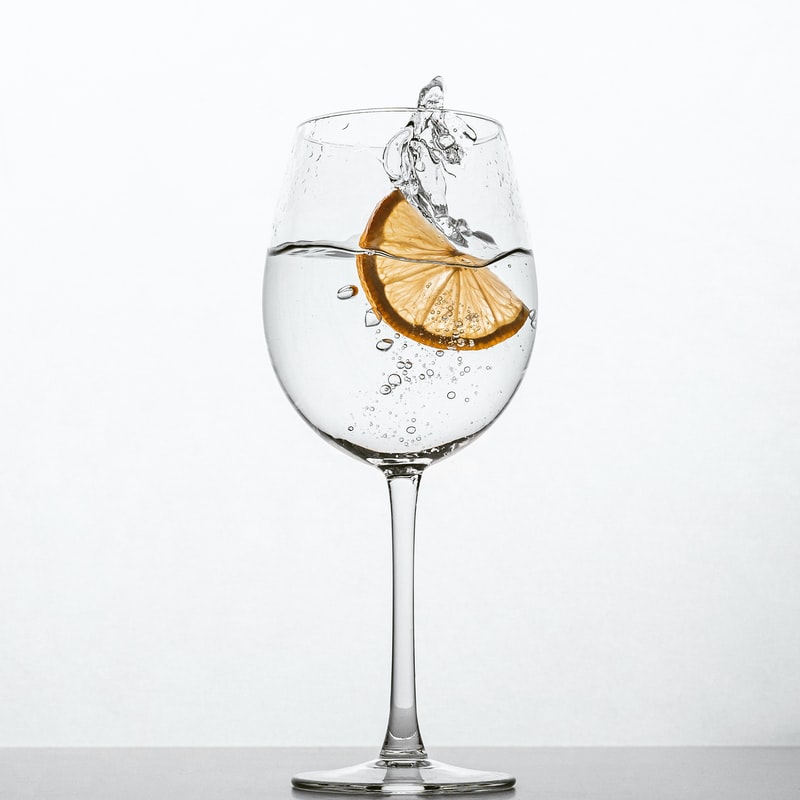
I have recently posted articles about Sugar and Tannin in wine as these are popular questions I often get asked. But very few people ask me about acid in wine or even appear to know it’s there. So in this article, I want to introduce acid in wine and explain why it is so important.

Grape berries contain a number of different types of acid, but the most important one from a drinking perspective is Malic acid. You may be familiar with Malic acid as the tart acid in green and unripe apples that gives you the pucker factor when you bite into them. Levels of Malic decrease as the grape berry develops and matures. The rate of decease is higher in warmer climates than cooler climates which means that cooler climate wines often have high levels of Malic acid. Good examples include Rieslings from the Clare Valley and Pinot Noir from Burgundy in France.
Contrary to popular opinion, acid exists in both red and white wines, although levels in white wines are often higher than red wine. White wines that are high in acid are often described as fresh or crisp, and there is even a process to convert this crisp acid into a softer acid (which I’ll cover in a future article).
So how do we perceive acid? There are two main areas on the tongue that detect acid: the tip of the tongue and the back sides of the tongue. Some people describe the sensation of acid as a tingling or slight burning on the tongue, which is why it’s sometimes referred to as searing acid.
But the most noticeable effect of acid is the level of salivation that the wine produces. The higher the level of acid, the greater the level of salivation.
If it all sounds a bit unpleasant, there are some good reasons to have acid in wine. High acid wines are great to drink on warm days as they are refreshing, promoting a high level of salivation and cleansing the mouth ready for the next glass. This is particularly true of Rose wines that often have high levels of acid to balance the fruit flavours. They are also great food wines as, like tannin, they cut through the fat in foods, especially oily fish such as salmon. Riesling and salmon is a classic food pairing.
Acid in red wine is also important. Without it wines can appear fruity and simple. Acid provides balance to a red wine and helps provide structure to the wine. The acid is often noticeable as you swallow the wine (what we call the wine’s finish), cleansing the palate. Acid also provides freshness to red wine, which is particularly noticeable in young red wines. However, acid does fade over time and leads to a softening of the wine. Interestingly, acid in wine helps to brighten the purple colour in some young red wines.
Acid is also one of the key measures used in judging balance in wine, along with sugar, tannin, aromas and flavours. Ultimately we want a wine that has levels of acid, tannin and sugar that are in balance. Although it should be noted that, as described in my previous article, there is an interesting interplay between acid and sugar. Acid can mask sugar, making the wine appear ‘dryer’ than it is. The higher the level of acid, the more sugar it can mask.
So the next time you drink a wine, especially a white wine, have a think about how ‘fresh’ the wines is – if there is any tartness and how much salivation it produces. And you, too, might get a better appreciation for the role of acid in wine.
If you would like to find out more, head over to our events page. I am also happy to tailor corporate events to your needs and budget – perhaps a fun tasting to see how different people perceive acid, and the effect on acidic wines for your clients or team. Feel free to reach out to me here for an initial discussion.
In the meantime, if you need any tips or advice then feel free to reach out to me on our Facebook page and sign up to my mailing list to get access to our newsletter and wine specials.
Cheers,
Antony.

